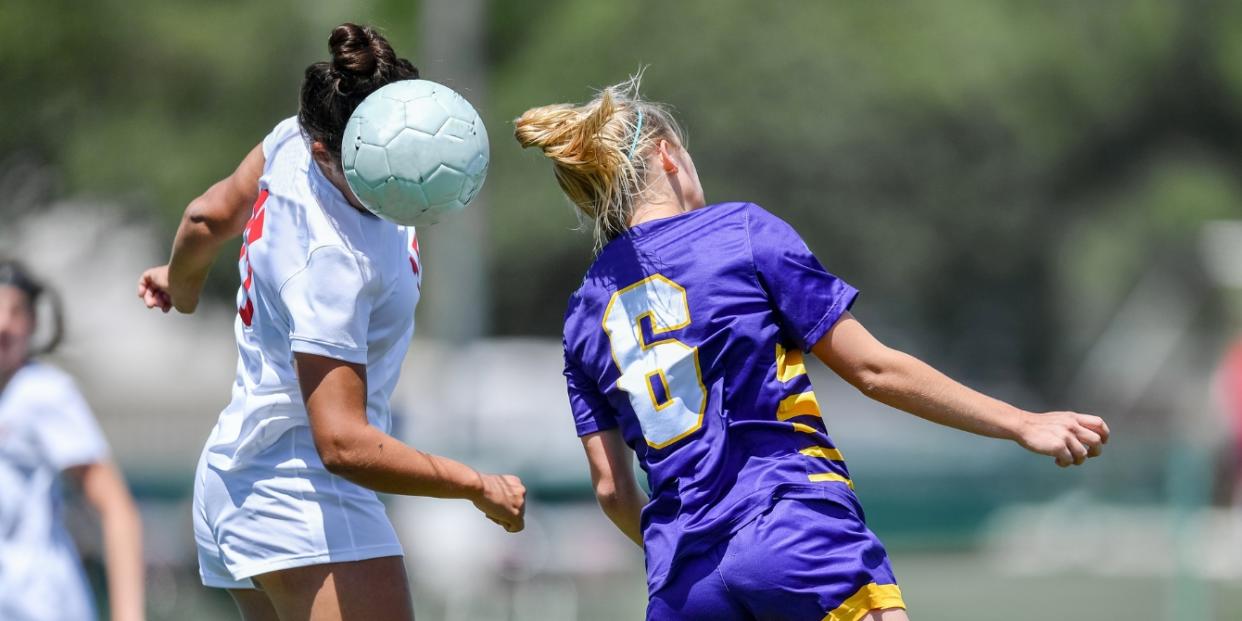Soccer heading linked to brain changes, study shows

That cool header that your kiddo does with the ball on the soccer field may make a great play, but it could cost them more than you think. New research links soccer heading—when players hit the ball with their head—to a measurable decline in brain microstructure and brain function.
A study looked at how often 148 young adult soccer players participated in heading. The average age was 27, and 26% of the participants were women. Over a two-year span, the players gauged if their exposure to headers was low, moderate or high.
Researchers assessed the players’ memory and verbal learning. The participants underwent diffusion tensor imaging (DTI), a type of MRI technique, when they started the trial period and two years later. DTI shows the microstructure of the brain by tracking how water molecules move through tissue.
People who headed the ball more frequently had higher diffusivity in frontal white matter regions and a lower orientation dispersion index (a measure of brain organization) in certain brain regions within two years of the exposure—changes seen in mild forms of traumatic brain injuries.
“Our analysis found that high levels of heading over the two-year period were associated with changes in brain microstructure similar to findings seen in mild traumatic brain injuries,” Michael L. Lipton, MD, a professor of radiology at Columbia University’s Vagelos College of Physicians and Surgeons and affiliate professor of biomedical engineering at Columbia University, a study author, said in a statement. “High levels of heading were also associated with a decline in verbal learning performance.”
“This is the first study to show a change of brain structure over the long term related to sub-concussive head impacts in soccer,” Dr. Lipton says.
The researchers found that the normally sharp gray matter-white matter interface was blunted in proportion to high repetitive head impact exposure.
“We used DTI to assess the sharpness of the transition from gray matter to white matter,” Dr. Lipton says. “In various brain disorders, what is typically a sharp distinction between these two brain tissues becomes a more gradual, or fuzzier transition.”
He added that gray matter-white matter interface integrity may play a causal role in the adverse association between repetitive head impacts and cognitive performance.
“These findings add to the ongoing conversation and contentious debate as to whether soccer heading is benign or confers significant risk,” he says.
“There is enormous worldwide concern for brain injury in general and in the potential for soccer heading to cause long-term adverse brain effects in particular. A large part of this concern relates to the potential for changes in young adulthood to confer risk for neurodegeneration and dementia later in life,” Dr. Lipton added.
If your kiddo or teen heads a soccer ball every now and then, will there be a significant impact on their brain function? It’s unlikely, mama, given that the strongest impacts on brain tissue were seen in the players who had the highest levels of headers. But the research findings are something to be aware of if your player is regularly jumping up to head the ball for much of their soccer years.


